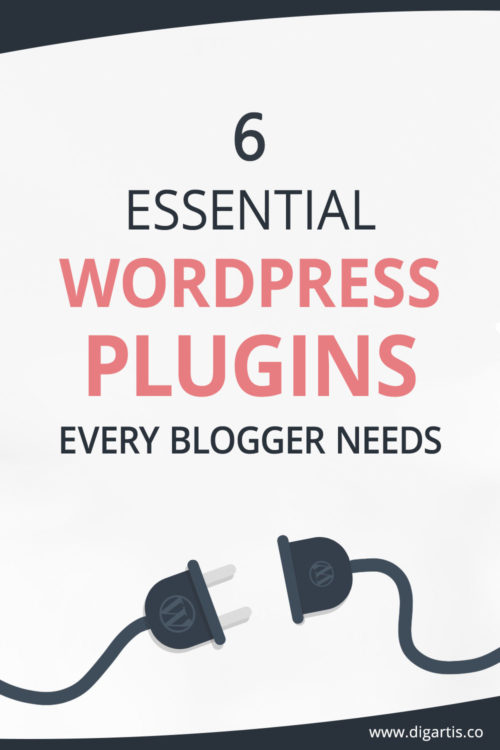When you own a blog, you want to reach a large audience with your content. Even though are many ways to drive traffic to a website, performing well on search engines should be high on your list. If your website is high in search results, you can potentially get a lot of free traffic. Sounds great, doesn’t it?
Unfortunately, there is no magic pill for that. You’ll have to develop a good SEO (Search Engine Optimization) strategy, be consistent with it, and have a lot of patience on top of that. The following 10 on-site SEO practices are a great starting point and should help you improve your website search ranking over time.

1. Create high quality and unique content
Good content is the core of every sound SEO strategy. It’s what adds value to your website, makes your readers engaged, and keeps them coming back for more.
But what makes good content?
Content quality is hard to define as it’s pretty subjective. In general, good content must create value and add usefulness. To achieve that, it should be:
- Original. Always write the content yourself. Avoid copying content from other websites as this will be sanctioned by search engines.
- Relevant. It should be up-to-date and as accurate as possible. Make sure you do your research!
- Grammatically correct and readable.
- Well-formatted. Avoid large chunks of text, but rather split your content into short paragraphs.
- Optimized for keywords (see below).
2. Optimize the content for the target keywords
While you primarily create content for your audience, not Google, you’ll still need to optimize it with the right keywords if you want Google to rank you high and give you organic traffic. A good keyword optimization strategy will let Google know which search terms are relevant to your content.
Here are a few rules of thumb for keyword optimization:
- Include the main keyword in your post/page headline (h1 title).
- Include enough keywords in your text content. Adequate keyword density is between 0.5% and 3%.
- Include the main keyword at the beginning of your post (within the first 100-200 words).
- Add a keyword to the meta title and meta description.
- Include the main keyword in the URL slug.
- Add a keyword to at least one of the image’s alt text, preferably the first image as it is often considered as the most important by Google.
- Include keywords in subheadings, but do not overdo it.
3. Write a good headline that reflects the content of the page
Think of the website as a document. The title is the single most important piece of information that should give readers an idea of what the content is all about. To make the most of it from the SEO perspective, you should wrap it in an h1 tag, use a large font so that it stands out on the page, and place it at the very top of the page.
Furthermore, you should use subheadings – h2, h3, and h4 – to split your text content into smaller, meaningful units that describe a specific section of your page.
4. Write an engaging meta title and description
The meta title is the most important information displayed on a search results page. As such, it should be engaging and include your target keyword. Try to keep it under 60 characters long, or Google may not display it in full.
The meta description is also part of the search result. It does not directly affect search ranking but helps increase the clickthrough rate. It’s a good practice to write a relevant meta description that indicates the content of the page. It should be at least 120 characters long, but not longer than 160.

5. Optimize your images for web
You should always include some images in your content. They will help explain it better and make it more pleasant to the eye.
These are the five golden rules of image optimization:
- Always choose the correct image format.
- Resize images. Do not use images with a larger resolution than necessary.
- Compress images to reduce their size.
- Give images a readable file name.
- Add a descriptive alt text.
6. Link to related content on your website
Internal links are a great way to let readers know about related content on your website. As a result, they might visit additional pages, which will reduce your bounce rate and increase the average time a user stays on your website, both of which are positive signals of your content quality for Google.
Furthermore, internal links help Google establish the structure of your website and spread link juice across your website.
A good internal linking strategy is based on the following rules:
- Provide at least one or two internal links on each page/post.
- Only link to relevant content on other posts/pages.
- Make sure the links stand out so visitors won’t miss them.
- Always make sure all the links are working – avoid 404 errors!
7. Keep your URLs short and readable
Depending on the CMS you’re using, the URL slugs often include a meaningless sequence of characters at the end – URL parameters. These are often impossible to read for visitors, which makes them less likely to click on the link or share it on social media.
You should always set up your website in a way that the URLs are friendly for search engines. An SEO friendly URL should:
- contain meaningful words so it can be easily read and understood by the user,
- contain a keyword, and
- indicate the content of the web page.
8. Make your website mobile-friendly
In this day and age, a large chunk of your traffic will come from mobile devices. By providing a great mobile experience, visitors will be able to navigate your website easily and access all of its content. Mobile-friendly websites also rank higher on Google and other search engines. Therefore, you should only ever use a website template that is ready for mobile devices or hire a web developer to build one for you.
What things should you pay attention to?
- The website should look good on popular mobile devices.
- It should have an easy-to-use mobile navigation.
- All the content should fit the screen. It should never overflow the screen, as this makes it hard to read.
- Font sizes should be large enough to read.
- All forms, such as contact or newsletter subscription form, should be easily accessible on mobile devices.
9. Install an SSL Certificate
A valid SSL certificate forces users to visit your website via the secure HTTPS protocol. Having an SSL certificate installed is no longer optional, as Google ranks websites that don’t use one lower. Besides, most modern browsers like Google Chrome and Mozilla Firefox mark such websites as insecure. This notification will send the majority of your audience running for the hills and never come back.
10. Improve your website speed
Page load speed is another factor that’s becoming increasingly important for Google ranking. Google doesn’t like slow websites. And for a good reason! They frustrate website visitors and make them leave.
Improving the website speed can be a very technical task, depending on the type of website and CMS you’re using. In short, you should consider:
- using a good hosting provider,
- caching your website files,
- using a well optimized website template – all scripts and CSS files minified and loaded in a way so that they do not block rendering of the web page,
- optimizing all media files for the web to reduce their size, and
- enabling Gzip compression to reduce the size of files sent from the server to the user’s browser.
To test the page speed, you can use Google PageSpeed Insights.
Conclusion
Seems like a lot to take in, doesn’t it? While at first, it may take some time to process all of this and make an efficient SEO strategy for your website, it gets a lot easier over time. Gradually, you’ll get into the habit of researching your keywords and writing your content in a way that will be inherently SEO friendly.
And bear in mind that SEO is an ever-changing, evolving practice that requires constant attention. You’ll have to keep up-to-date with the newest Google algorithm changes and adapt your SEO strategy accordingly. But at the end of the day, it’ll be all worth it!
How do you go about SEO on your blog? Do you follow any of the tips we mentioned? Let us know in a comment below.



